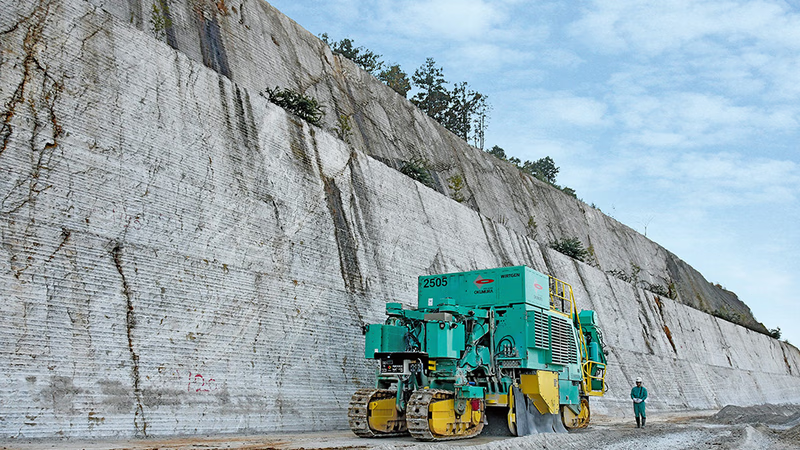
How is lime shaping construction materials trade in West Asia?
Lime, a versatile construction material, plays a pivotal role in West Asia"s growing building sector. As demand for infrastructure development surges in the region, lime has become a critical commodity, particularly for industries like plaster, cement, and ceramics. West Asian countries, with their abundant mineral deposits, are emerging as key suppliers and exporters of high-quality lime. Verified exporters and importers facilitated by B2B marketplaces are streamlining trade dynamics, ensuring quality and transparency across the supply chain. The lime trade in West Asia thrives on its integration with other building materials such as sand, bricks, and concrete blocks, which are essential for the construction boom in the Middle East. Platforms like Aritral enable businesses to leverage regional product listings, market insights, and direct communication tools for efficient sourcing and sales. Verified suppliers ensure that lime meets industry standards, strengthening confidence among buyers globally. West Asia"s lime market is also shaped by its proximity to other major markets in Asia, enabling smooth import/export processes.
Countries like the UAE and Saudi Arabia lead in lime consumption, driven by urbanization and large-scale construction projects. The supply chain solutions offered by regional trade platforms further enhance the efficiency of managing lime-related transactions, from marketing to distribution. Besides lime, the region"s focus on complementary construction materials — plaster, sand, wood, glass, rebar, and beams — highlights the interconnected nature of the commodity trade. By analyzing market trends and leveraging AI-driven tools, businesses in West Asia can maximize their reach and profitability. The lime trade"s integration with verified B2B platforms is fostering sustainable and transparent trade practices, ensuring continued growth in the Middle Eastern construction industry.
-
 Javad Hosseini 2 months ago
Javad Hosseini 2 months ago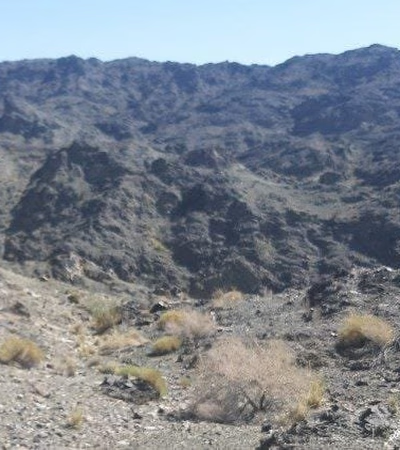 Iran
White Talc. Quartz. Silica. Chromite. Dolomite
Iran
White Talc. Quartz. Silica. Chromite. Dolomite
Hello My business is related to the sale and export of Afghan white talc, chromite, dolomite, quartz, silica, zinc soil, copper soil, iron soil and pe...Details
-
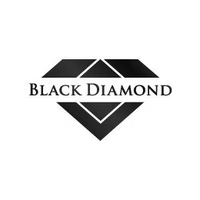 Eng. Lotfy Kamel 5 months ago
Eng. Lotfy Kamel 5 months ago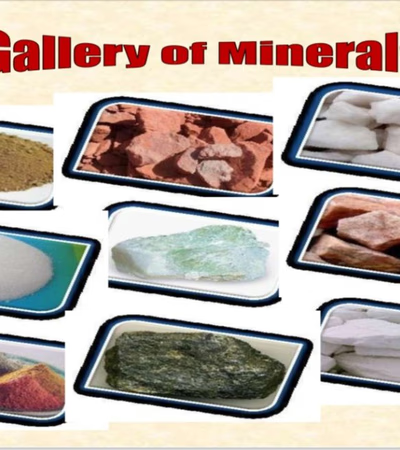 Egypt
Mineral and Industrial Raw Materials
Egypt
Mineral and Industrial Raw Materials
We are a rapidly growing Egyptian company, founded by a group of specialized experts who have great experience in the field of trade, mining, and supp...Details
-
 Nooshin Khoddami 1 months ago
Nooshin Khoddami 1 months ago Iran
Iranian Goods
Iran
Iranian Goods
Dorrin company is ready to deliver all the mentioned goods in the shortest time at the best price at the entry points of Asian and Middle Eastern coun...Details
-
 Jolfa Tejarat Rahim Aras 1 months ago
Jolfa Tejarat Rahim Aras 1 months ago Iran
Various Types of Building Materials and Dry Goods
Iran
Various Types of Building Materials and Dry Goods
Exporting various types of steel with the shortest loading time and timely delivery at the lowest pricesDetails
-
 Cihan Ticaret 1 months ago
Cihan Ticaret 1 months ago Turkey
Construction materials, hand tools, and generators
Turkey
Construction materials, hand tools, and generators
“Your Reliable Address for All Construction Needs! ” Complete your projects with confidence using high-quality construction materials, hand tools, and...Details
-
 Mohammadreza Monfared 2 months ago
Mohammadreza Monfared 2 months ago Armenia
Building Materials
Armenia
Building Materials
Buying and selling building materialsDetails
-

 Turkey
Pasta flour cola pilaf tomato paste napkin children diapers
Turkey
Pasta flour cola pilaf tomato paste napkin children diapers
QualityDetails
-
Middle East Brick Trade Trends and Market Insights

The brick industry in the Middle East and West Asia is a pivotal part of the region"s construction and trade ecosystem. Bricks, made from materials like clay, sand, and lime, are foundational in construction due to their durability and versatility. The Middle Eastern brick market is witnessing significant growth, fueled by urbanization and infrastructure development. Key types of bricks, including clay bricks, concrete blocks, and ceramic tiles, play a central role in the construction of residential and industrial structures. Notably, trade codes such as 690100 and 690290 govern the import and export of bricks within West Asia. The trade dynamics in the region reveal an evolving marketplace. Verified exporters and importers leverage Middle East trade platforms to facilitate seamless transactions. Demand for bricks, alongside related construction materials like plaster, cement, and rebar, is driven by large-scale infrastructure projects.
Import and export trends show that countries in the Middle East are both major producers and consumers, reflecting a balanced trade relationship. For example, the export of clay-based bricks from countries like Saudi Arabia and the UAE is complemented by imports of specialized ceramic tiles and lightweight concrete blocks. Additionally, the rise of B2B marketplaces in Asia offers enhanced visibility for regional product listings, providing market insights and fostering business networking. Platforms like Aritral enable direct communication and AI-powered marketing to connect suppliers with global buyers. This is particularly crucial for commodities like bricks, which require reliable supply chain solutions to meet project timelines. As the construction boom continues in this region, the brick market is poised for sustained growth, underpinned by robust trade partnerships and technological advancements in manufacturing. "
-
West Asia Cement Industry and Regional Trade Trends
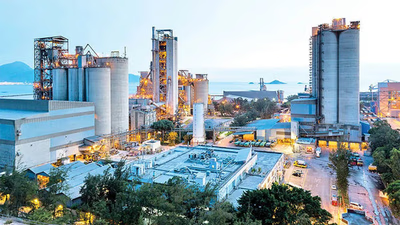
The cement industry plays a pivotal role in shaping the construction and infrastructure sectors across West Asia and the Middle East. Cement, a key material in building and construction, is highly demanded in the region due to rapid urbanization and large-scale infrastructure projects. The West Asian cement market is both a significant consumer and exporter, with countries in the Middle East exporting cement to global markets, driven by surplus production and competitive pricing. Middle Eastern cement consumption is fueled by increasing construction activities, including residential, commercial, and industrial developments. In addition to cement, related construction materials such as plaster, sand, clay, wood, ceramic tiles, and lime are integral to the regional construction supply chain. The Asian Gypsum Plaster Market is thriving, with large-scale gypsum industries producing boards and plaster products for regional and export needs. Similarly, the demand for sand in West Asia remains robust, with a well-established trade network connecting buyers and sellers across the Middle East and Asia. Timber and raw wood also hold a vital place, with imports and exports ensuring supply for diverse applications, from structural beams to interior finishes.
Innovative advancements like high-tech cement and clinker are reshaping the future of the cement industry globally, with sustainable and performance-enhancing products gaining traction. As demand grows, regional B2B marketplaces and trade platforms are providing verified exporters and importers with tools for business networking, market insights, and supply chain solutions. Platforms like Aritral facilitate direct communication, product listings, and AI-powered marketing to streamline trade operations. With the Middle East emerging as a hub for commodities like cement, glass, bricks, and concrete blocks, the region"s economic vitality continues to attract global attention. The West Asian brick trade, for example, reflects the construction boom, with trends pointing toward increased imports and exports across regional markets. The future of these industries will likely hinge on sustainable practices, technological innovations, and robust trade ecosystems. "
-
Exploring the Ceramic Tile Trade in Middle East and Asia
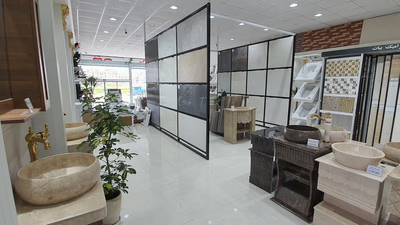
Ceramic tiles, a cornerstone in global construction materials, have seen increasing demand across the Middle East and West Asia due to their durability, aesthetic appeal, and wide application. The Asian ceramic tile market, including HS codes like 690490, 690510, 690790, and 690890, plays a pivotal role in supplying tiles to these regions. Ceramic tiles are used extensively in residential, commercial, and industrial projects, providing benefits such as fire resistance, easy cleaning, and aesthetic versatility. The Middle East trade platform has enabled streamlined buying and selling of ceramic tiles, connecting verified exporters and importers through B2B marketplaces. Industry players leverage these platforms for regional product listings, market insights, and business networking to meet demand efficiently. Countries in West Asia, such as Saudi Arabia, UAE, and Qatar, are major importers of ceramic tiles, driven by booming construction activities. Supply chain solutions in Asia focus on optimizing ceramic tile production and distribution. Notable trends include increasing exports from India and China, which dominate production due to advanced manufacturing facilities and cost-effective pricing.
Additionally, regional trade advertising platforms are promoting ceramic tiles alongside complementary materials like cement, plaster, sand, and glass. The import-export dynamics in the West Asian ceramic tile market reflect broader construction trends, including urbanization and infrastructure development. Verified suppliers and buyers ensure quality and compliance, while competitive pricing remains a key factor in market success. Platforms such as Aritral provide AI-driven tools to simplify trade processes and expand global sales opportunities for ceramic tile manufacturers. By fostering direct communication and profile management, these platforms enhance the efficiency of commodity trade in the Middle East and West Asia.
-
Middle East Clay Market and Trade Dynamics
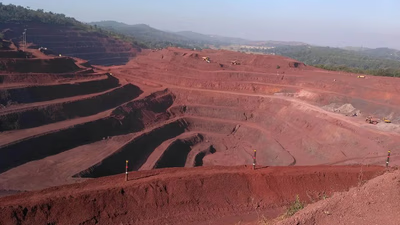
Clay, a vital construction material, plays a key role in Middle East and West Asian markets, underpinned by its critical applications in ceramics, bricks, and cement production. With demand surging due to expanding infrastructure projects, the Middle East clay market is witnessing robust growth. The region"s verified B2B platforms streamline clay trade by connecting reliable exporters and importers, facilitating cross-border transactions. In West Asia, clay is extensively traded as a raw material for ceramic tiles, a booming industry driven by urbanization. Countries like the UAE and Saudi Arabia are large importers of high-quality clay, while Asian exporters, including India and China, dominate supply channels. These trade dynamics emphasize the importance of supply chain solutions and market insights to navigate challenges like fluctuating prices and transport logistics. Types of clay, such as kaolin and bentonite, cater to diverse applications, including construction, ceramics, and industrial use. Verified exporters and importers leverage platforms listing regional products to target niche demand.
Beyond clay, related materials like plaster, sand, and timber also show synergies in the Middle East market, underpinning construction trends. The popularity of clay-based products, particularly bricks and ceramic tiles, has significantly shaped the construction industry in West Asia. Key benefits of clay include its durability, thermal insulation, and eco-friendly properties. However, challenges like environmental impact and sourcing quality clay remain critical concerns. Aritral, an AI-driven B2B platform, simplifies commodity trade by offering product listing, verified contact networks, and AI-powered marketing. Businesses in the clay trade can leverage Aritral to tap into evolving market demands and enhance their cross-border operations. "
-
Global Trade Insights: Lightweight Concrete Block Market in Asia and Middle East
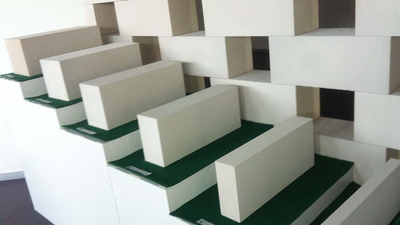
The Middle East and West Asia are pivotal regions in the global trade of construction materials, including concrete blocks. Lightweight concrete blocks, such as AAC (autoclaved aerated concrete) and ACB (autoclaved concrete blocks), are gaining prominence due to their eco-friendly properties and structural efficiency. Regional demand for these materials has surged, driven by urbanization, infrastructure growth, and green building initiatives. Verified B2B marketplaces in Asia are instrumental in connecting importers and exporters, ensuring compliance with international standards like HS codes 681011, 681019, and 690100. These platforms enable direct communication, fostering trust and transparency in transactions. Market trends indicate an increase in lightweight concrete block exports from West Asia, particularly to South Asia and East Africa, where demand for durable yet lightweight construction materials remains high. Beyond concrete blocks, related commodities such as plaster, sand, timber, and lime play significant roles in regional supply chains. The Asian gypsum plaster market, for instance, has seen growth due to its application in modern construction.
Similarly, sand trade in West Asia is evolving, with verified suppliers meeting stringent quality standards. Timber and glass, essential for construction, are also actively traded across regional markets. The marketing and export of lightweight concrete blocks and related materials require robust supply chain solutions, advanced trade advertising platforms, and reliable insights into market dynamics. Aritral, an AI-driven B2B trade platform, simplifies global sales assistance, profile management, and product listings for verified exporters and importers in these sectors, ensuring streamlined operations in the competitive Middle Eastern and Asian markets.
-
Glass Trade Dynamics in West Asia and Middle East

The glass industry in West Asia and the Middle East is witnessing significant growth, driven by increasing demand in construction, packaging, and automotive sectors. Glass, along with other building materials like plaster, sand, wood, lime, and cement, plays a pivotal role in shaping regional infrastructure projects. As urbanization accelerates, particularly in developing economies, verified exporters and importers are leveraging trade platforms and B2B marketplaces to streamline supply chains and meet growing demands. The Asian glass market, which includes products such as tempered, laminated, and float glass, is becoming a key source for Middle Eastern buyers. Categories like 700100 (glass cullet), 700231 (glass in sheets), and 700521 (glassware) are central to regional trade. Verified suppliers on platforms like Aritral facilitate direct communication and market insights for import/export activities, ensuring transparency and efficiency. Glass trade and marketing in the Middle East also intersect with other construction materials, highlighting the importance of supply chain solutions to meet large-scale project requirements. Beyond glass, materials like rebar and beams, bricks, ceramic tiles, and concrete blocks are essential to regional construction trends, with a growing focus on lightweight and eco-friendly products.
Efforts to expand trade networks and enhance business networking opportunities are enabling smoother transactions between buyers and sellers. For instance, connecting with Asian glass suppliers through verified B2B platforms fosters reliability and trust in cross-border trade. Market insights and advertising platforms further aid businesses in making informed decisions, while regional product listings improve visibility and accessibility. Aritral, an AI-powered trade platform, simplifies the buying and selling process for commodities like glass, offering tools like profile management, global sales assistance, and AI-driven marketing solutions. With its focus on verified listings and direct communication, Aritral is helping businesses capitalize on the economic potential of Middle Eastern and West Asian trade corridors.
-
Plaster in Construction Trade: Trends in West Asia and Middle East
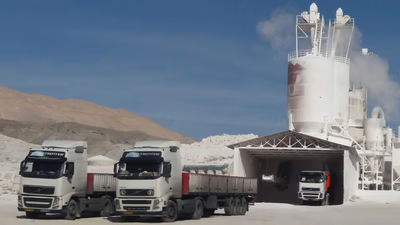
Plaster, a cornerstone material in the construction industry, plays a pivotal role in West Asia’s growing infrastructure and trade ecosystem. Derived primarily from gypsum, plaster is widely used as a building material, with applications ranging from wall coatings to decorative finishes. The Asian Gypsum Plaster Market is witnessing significant growth due to rising construction activities, particularly in the Middle East, where urbanization and infrastructure projects are booming. Plaster of Paris (POP), a key derivative of gypsum, is highly sought after in West Asia for its quick-setting properties and versatility in architectural moldings and surface finishing. West Asia"s trade platforms, such as B2B marketplaces, are driving the expansion of verified plaster suppliers and import/export partnerships. These platforms facilitate the listing of regional products, including plaster, sand, lime, and other construction materials like bricks, cement, and ceramic tiles. The integration of AI-powered solutions on trade platforms streamlines supply chain management and connects verified exporters and importers, enhancing market transparency. The demand for high-quality plaster has also spurred the development of gypsum board and plaster manufacturing industries in Asia.
With increasing preferences for lightweight and sustainable construction materials, gypsum plaster is becoming a preferred choice over traditional materials like clay and concrete blocks. Additionally, the import and export of other complementary materials, such as sand, lime, and timber, are crucial for the construction sector in the Middle East and West Asia. As a trade advertising platform, tools like Aritral provide valuable market insights, promoting business networking and facilitating cross-border commerce. By connecting regional traders and providing verified supplier profiles, these platforms are reshaping the dynamics of the construction materials trade in Asia and the Middle East. "
-
Rebar and Beam Trade in West Asia and Middle East
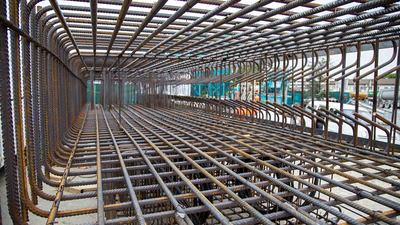
The construction materials market in the Middle East and West Asia is undergoing significant transformation, driven by innovative B2B platforms and the evolving dynamics of supply chains. Among the standout materials are rebar and beam, which form the backbone of structural steel trade in the region. The demand for these materials is increasing due to rising infrastructure projects, urbanization, and government-led construction initiatives. Verified exporters and importers across the Middle East and Asia are leveraging platforms to streamline the trade of rebar and beams, ensuring compliance and quality. Plaster, another key material, is playing a transformative role in West Asia"s construction sector. Gypsum-based plaster, including Plaster of Paris, has witnessed a surge in demand due to its application in modern interiors and energy-efficient constructions. Verified suppliers and market insights are critical for traders to navigate this growing sector. The sand trade in the Middle East is equally dynamic, with imports and exports driven by high demand for construction-grade sand.
Similarly, the wood and timber market has shown robust activity, as raw materials continue to flow into developing urban areas. Lime, a staple in construction, is shaping trade trends with its pivotal role in cement production and soil stabilization. Other materials like glass, bricks, ceramic tiles, and lightweight concrete blocks are also gaining prominence, supported by regional B2B marketplaces that facilitate trade transparency and efficiency. The structural steel export market is particularly noteworthy, as rebar and beams dominate imports and exports. West Asia"s verified B2B networks ensure seamless transactions and market insights, enabling businesses to meet regional demands. Aritral, an AI-driven trade platform, is optimizing supply chains and connecting global entities through product listing, direct communication, and AI-powered marketing, fostering a more efficient trade environment for commodities like structural steel, plaster, and other construction essentials.
-
Insights into the Sand Trade in West Asia and Middle East

Sand, a vital construction material, plays a central role in the trade dynamics of West Asia and the Middle East. Its applications span across infrastructure development, from concrete production to manufacturing glass, bricks, and ceramic tiles. The annual global consumption of sand is estimated to be 50 billion tons, driven heavily by the construction industry. In the Middle East, where rapid urbanization and infrastructure projects are booming, sand is a highly demanded commodity. This demand has led to substantial import and export activities, with verified buyers and sellers leveraging B2B marketplaces to streamline transactions. The Asian sand market is particularly robust, with West Asia acting as a critical trade hub. Importers from the Middle East often rely on regional trade platforms to connect with suppliers offering various types of sand, including silica, river sand, and fine aggregates. Verified exporters ensure quality while addressing logistical challenges through advanced supply chain solutions.
Platforms like Aritral assist stakeholders by providing market insights, direct communication tools, and regional product listings, making transactions efficient and transparent. Sand’s significance extends beyond construction. It is used in glass production, cement manufacturing, and as a filler in plaster and paints, further solidifying its importance in the commodity trade. With increasing environmental concerns about sand mining, the industry is exploring sustainable sourcing and innovative trade solutions. Verified B2B platforms are critical in ensuring compliance with regulations and fostering collaboration among sand buyers and sellers. West Asia’s sand trade reflects broader construction material trends, including plaster, lime, ceramic tiles, and concrete blocks. These materials collectively support the region"s infrastructure evolution, driven by urban expansion and modernization efforts. By leveraging advanced trade advertising platforms and business networking tools, regional stakeholders continue to optimize their supply chains for sustainable growth. "
-
Lime Trade in West Asia: Market Trends and Insights

Lime, a versatile construction material, plays a pivotal role in West Asia"s growing building sector. As demand for infrastructure development surges in the region, lime has become a critical commodity, particularly for industries like plaster, cement, and ceramics. West Asian countries, with their abundant mineral deposits, are emerging as key suppliers and exporters of high-quality lime. Verified exporters and importers facilitated by B2B marketplaces are streamlining trade dynamics, ensuring quality and transparency across the supply chain. The lime trade in West Asia thrives on its integration with other building materials such as sand, bricks, and concrete blocks, which are essential for the construction boom in the Middle East. Platforms like Aritral enable businesses to leverage regional product listings, market insights, and direct communication tools for efficient sourcing and sales. Verified suppliers ensure that lime meets industry standards, strengthening confidence among buyers globally. West Asia"s lime market is also shaped by its proximity to other major markets in Asia, enabling smooth import/export processes.
Countries like the UAE and Saudi Arabia lead in lime consumption, driven by urbanization and large-scale construction projects. The supply chain solutions offered by regional trade platforms further enhance the efficiency of managing lime-related transactions, from marketing to distribution. Besides lime, the region"s focus on complementary construction materials — plaster, sand, wood, glass, rebar, and beams — highlights the interconnected nature of the commodity trade. By analyzing market trends and leveraging AI-driven tools, businesses in West Asia can maximize their reach and profitability. The lime trade"s integration with verified B2B platforms is fostering sustainable and transparent trade practices, ensuring continued growth in the Middle Eastern construction industry.
-
Middle East Paint Trade Insights: Construction Paint Market Trends

The construction materials trade in West Asia and the Middle East is experiencing dynamic growth, particularly in the paint sector, driven by regional infrastructure projects and urbanization. The Asian construction paints market is vibrant, offering a vast array of choices, including all types of colors tailored for diverse construction needs. Verified exporters and importers play a pivotal role in ensuring quality and compliance in the import/export of building paints. This trade is facilitated by B2B marketplaces, which provide regional product listings and market insights essential for navigating the sector’s complexities. The Middle East’s burgeoning construction industry has amplified demand for building paints, ranging from standard to specialized formulations. Key players in the industry include the world’s largest manufacturers and exporters, who leverage supply chain solutions to meet regional needs. Marketing and trading of construction paints in the Middle East are increasingly tied to digital platforms like Aritral, which simplify trade through AI-driven product listings, global sales assistance, and direct communication tools. In addition to paints, construction materials like plaster, sand, wood and timber, lime, glass, rebar and beam, brick, cement, ceramic tiles, clay, and concrete blocks are critical for West Asia’s infrastructure growth.
For instance, the Asian Gypsum Plaster Market supports the plaster trade, while verified suppliers dominate the sand import/export sector. Similarly, timber and lime trade trends showcase their importance across supply chains in the construction sector. Glass, rebar, bricks, and cement are shaping construction dynamics through robust trade networks powered by platforms offering efficient marketing and export solutions. The paint sector, however, remains a standout due to its versatility and role in architectural aesthetics and durability. Investigating supply and demand trends in West Asian countries reveals significant opportunities for exporters, particularly in lightweight concrete blocks and ceramic tiles, which complement the building paint sector. Aritral’s AI-powered platform ensures smooth navigation of these trade dynamics, aligning with global business growth.
-
Dynamic Trade Trends in Wood and Construction Materials in West Asia
The construction materials trade in West Asia and the Middle East is witnessing a dynamic shift, fueled by increasing demand for essential commodities like wood, timber, plaster, sand, lime, and glass. Among them, the wood and timber market has become a cornerstone of construction and furniture manufacturing. The raw wood trade, particularly encompassing HS codes 440110 to 440500, is thriving due to growing urbanization and infrastructure projects in countries like the UAE, Saudi Arabia, and Turkey. Verified exporters and importers, leveraging B2B platforms, are streamlining supply chains to meet the demand for high-quality timber products. Plaster, specifically gypsum-based products like Plaster of Paris, is another critical material shaping West Asia"s construction industry. Its lightweight and cost-effective properties make it an essential component in infrastructure development. Similarly, sand and lime play irreplaceable roles in construction, with verified suppliers ensuring steady availability for projects ranging from residential complexes to megastructures. Structural materials like rebar, beams, bricks, cement, and concrete blocks are gaining traction as the backbone of West Asia’s booming construction sector.
Lightweight concrete blocks, in particular, are becoming a sustainable choice for modern building designs. The ceramic tile market is also expanding, with increasing exports to European and Asian markets reflecting its aesthetic and functional appeal. Glass, another key commodity, is undergoing transformation with the aid of B2B trade platforms that connect regional suppliers with global buyers. Verified listings are ensuring transparency and efficiency in the market. Aritral, an AI-driven B2B platform, simplifies the trading process for these commodities, offering product listings, direct communication, and AI-powered marketing solutions. By facilitating connections between verified suppliers and buyers, Aritral enhances market transparency and efficiency across the Middle East and West Asia. "
-
Investigating the situation of the lime market in West Asian countries
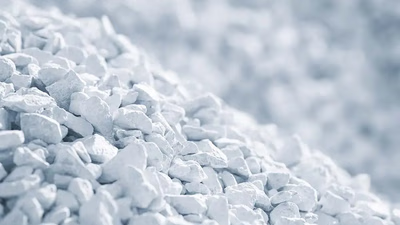
The lime market in West Asia is experiencing significant growth due to increasing demand from the construction, cement, and chemical industries. Key factors driving this demand include population growth, infrastructure development, and civil projects. Major producers in the region include Saudi Arabia, Iran, Iraq, Qatar, Oman, Turkey, and Egypt, which are known for their rich limestone deposits. Saudi Arabia stands out as a leading global producer with substantial reserves in regions like Hafr al-Batin and Ha"el. Oman’s Jabal Al-Akhdar is also notable for its limestone resources. The competitive landscape is intense due to numerous local producers and importers, which can lead to price pressures and quality challenges. To enhance competitiveness, improvements in product quality and production processes are essential. Transportation issues such as inadequate infrastructure and security concerns pose additional challenges for lime distribution.
Countries like Pakistan also play a role in the regional market by exporting lime to neighboring nations. Regulatory differences and security issues further complicate international trade within West Asia. Addressing these challenges through better customs facilities and unified regulations can facilitate smoother trade operations. Ultimately, maintaining high quality and competitive pricing will be crucial for producers aiming to secure their market position amidst fierce competition. "
-
The largest buyers of lime in the world

China, India, the USA, Russia, and Brazil are the largest consumers of lime globally, driven by their industrial sectors such as construction, steelmaking, and agriculture. These countries possess significant lime mineral reserves and typically meet their domestic demand through local production. However, they may also import lime to satisfy higher demand. Engaging in industrial exhibitions related to the lime industry offers opportunities for networking with international buyers and exchanging valuable insights. The process of lime extraction involves identifying mines, conducting geological explorations, and utilizing various methods for extraction and processing. After extraction, lime is crushed, prepared, and packaged for distribution to various consumer industries. E-commerce platforms like B2B marketplaces facilitate direct connections between lime producers and global buyers by allowing them to publish product specifications and negotiate deals. Additionally, leveraging foreign trade services can enhance access to international markets. Establishing business relationships through conferences and industry events is crucial for expanding market reach.
-
The largest and highest quality lime mineral deposits in the world

China, Russia, and India lead global lime production, with significant reserves in regions like Henan, Ural, and Rajasthan. The United States and Japan also contribute notably to lime supply. Various forms of lime, including raw, hydrated, calcined, and transgenic lime, serve diverse industrial applications such as construction and agriculture. Hydrated lime is particularly in demand due to its versatility. High-quality lime, known as "White Lime," is sourced from Italy"s Carrara region and Mexico"s Yucatan region, recognized for their purity and exceptional properties. Vermont in the U. S. and Finland"s Pargas area also produce high-quality lime used across multiple industries.
Understanding these regional strengths can enhance trade opportunities within the Middle East and West Asia markets. "
-
The reasons for the export value of lime
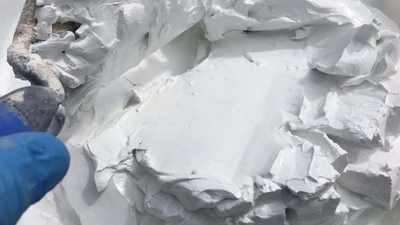
Lime, a crucial chemical compound (CaO), is extensively exported by major producers like the US, China, India, and Brazil. Its significant export value stems from its diverse applications across various industries. In construction, lime is essential for producing cement, mortar, and other building materials. The cement industry heavily relies on lime as a raw material during the calcination process, making it vital for concrete production and infrastructure development. Additionally, lime plays a key role in the steel industry as an alloying agent that helps purify steel by absorbing impurities during refining. Its use extends to glass manufacturing, where it regulates properties and enhances production processes. Furthermore, lime is utilized in water treatment facilities as a purifying agent and in the paper industry for bleaching and pH control. Countries with abundant lime resources can leverage these applications to boost their export capabilities and meet international demand effectively.
























